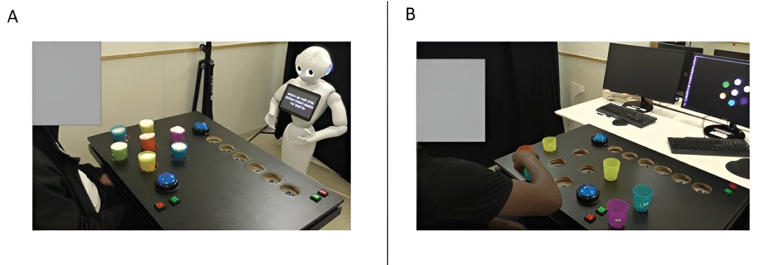
Welcome to china's largest care and rehabilitation expo with 50,000 visitors
Industry News Oct. 09, 2024

The experimental setup. A. Participant in the ROBOT group. The social robot Pepper gives instructions and feedback to the patient, which are presented both on the robot’s tablet screen and verbally. B. Participant in the COMPUTER group. The instructions and feedback are presented both on a computer screen and verbally. Credit: IEEE Transactions on Neural Systems and Rehabilitation Engineering (2024). DOI: 10.1109/TNSRE.2024.3387320
Using a socially assistive robot (SAR) in post-stroke rehabilitation improves outcomes, according to Ben-Gurion University of the Negev researchers. They conducted the first long-term study of robot use in physical therapy. The study opens a totally new method for rehabilitation exercises.
Socially assistive robots use speech, facial expressions, and gestures to guide and coach patients. No appointment is needed: they will come to your house and stay there. What is more, they are endlessly encouraging and perceived as nonjudgmental. Prof. Shelly Levy-Tzedek, Dr. Ronit Feingold-Polak and Oren Barzel found that SARs worked better than computers or no technological intervention when combined with usual care.
Their findings were published recently in IEEE Transactions on Neural Systems and Rehabilitation Engineering.
"Use of robots could vastly improve rehabilitation outcomes by encouraging people to continue their treatment in what they feel is a non-judgmental setting. Our study found that people enjoyed their interactions with the SAR, which seems to have helped improve their recovery over working with a computer or without any technological assistance," says Prof. Levy-Tzedek.
26 participants at the Adi Negev Rehabilitation Center outpatient clinic completed the clinical trial. They were randomly divided into three groups:
1.training with a SAR in addition to usual care;
2.training with a computer in addition to usual care; and
3.usual care with no additional intervention.
The intervention sessions took place three times/week, for a total of 15 sessions/participant. The study was conducted over two years, during which 306 sessions were held.
Participants in the SAR group significantly improved in their kinematic and clinical measures which included smoothness of movement, action research arm test (ARAT), and Fugl-Meyer upper-extremity assessment (FMA-UE). No significant improvement in these measures was found in the computer or the control groups. 100% of the participants in the SAR group gained improvement which reached—or exceeded—the minimal clinically significant difference in the ARAT, the gold standard for upper-extremity activity performance post-stroke.
"This study demonstrates both the feasibility and the clinical benefit of using a SAR for long-term interaction with post-stroke individuals as part of their rehabilitation program," says Dr. Ronit Feingold Polak.